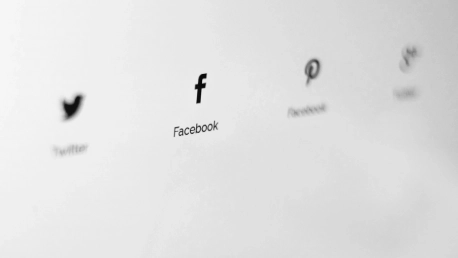Programmatic advertising has revolutionized the way brands reach their audiences, offering remarkable efficiency and reach through automated real-time ad space transactions. However, this advanced ecosystem presents significant challenges in maintaining brand integrity, particularly when it comes to ensuring ads do not appear alongside misleading or false information. To navigate these challenges, advertisers and ad tech vendors must adopt a multi-faceted approach to ensure brand safety.
The Rise and Complexities of Programmatic Advertising
The rapid growth of programmatic advertising brings numerous advantages, notably the ability to buy and sell ad space in real-time with unparalleled precision. This automation significantly enhances the efficiency of ad campaigns and allows brands to reach their target audiences more effectively. However, the very factors that contribute to the success of programmatic advertising also introduce complexities. With the scale and speed of automated transactions, there’s a heightened risk of ads appearing in contexts that could harm brand reputation. Issues such as ad fraud and placement alongside inappropriate content can have damaging consequences for brands. Thus, the very tools designed to optimize advertising efficiency must be meticulously managed to prevent negative outcomes.Furthermore, as digital advertising continues to evolve, the landscape becomes ever more challenging to navigate. Programmatic platforms often deal with millions of transactions daily, making it increasingly difficult to maintain control over where ads are placed. This scale can introduce significant risks, as even a small margin of error could lead to widespread issues. Therefore, addressing these complexities requires a comprehensive understanding of the technology involved and a commitment to continual improvement in safeguards and oversight. Brands must strike a delicate balance between leveraging the efficiencies of programmatic advertising and proactively preventing the potential risks that come with it.
Multifaceted Strategies for Brand Safety
A comprehensive approach to brand safety in programmatic advertising involves several key strategies. One essential measure is publisher verification. By ensuring that only credible and reliable sources participate in their ad networks, advertisers can significantly reduce the risk of their ads appearing on dubious sites. Collaborating with third-party verification services further strengthens this approach. Third-party verification services specialize in auditing and certifying the authenticity of content, providing an additional layer of security and ensuring transparency. These services can monitor and analyze ad placements in real-time, offering invaluable insights and enabling prompt corrective actions when needed. As such, they play a critical role in safeguarding brand integrity. Moreover, utilizing advanced contextual analysis tools can significantly enhance brand safety strategies. These tools scrutinize the content surrounding ad placements, helping ensure that ads do not appear next to inappropriate or misleading information. By leveraging machine learning and AI technologies, these tools can swiftly and accurately assess context, making them invaluable in the dynamic environment of programmatic advertising. When combined with human oversight, these technologies can form a robust defense against potential threats to brand safety, ensuring a more controlled and secure advertising landscape.
Verification and Accountability Measures
Stricter publisher verification processes are a cornerstone of maintaining brand safety. This involves vetting publishers for credibility, reliability, and adherence to industry standards before allowing them into the ad network. Such measures ensure that ads are placed in conducive environments, aligned with the brand’s image and values. Additionally, accountability is enhanced through collaboration with third-party verification services. These entities provide independent audits of ad placements, giving advertisers confidence that their campaigns are reaching valid audiences in suitable contexts. The transparency this collaboration fosters is vital for maintaining trust with both consumers and industry partners.Furthermore, establishing clear and enforceable contracts with publishers can solidify accountability measures. These agreements should outline the standards and expectations for ad placements, including repercussions for non-compliance. Regularly reviewing and updating these contracts can ensure they remain relevant and effective in mitigating risks. Additionally, fostering open communication channels between advertisers and publishers can enhance mutual understanding and cooperation. This collaborative approach can lead to more effective enforcement of verification and accountability measures, ultimately contributing to a safer and more trustworthy advertising environment.
Technological and Human Oversight
While technological tools are indispensable for managing programmatic advertising at scale, they are not infallible. Issues may arise that automated systems cannot always catch, necessitating the inclusion of human oversight. Regular audits and manual reviews conducted by trained professionals are crucial for identifying and addressing these gaps. Sophisticated contextual analysis tools can also complement human oversight. These technologies analyze the content surrounding ad placements, ensuring ads do not appear next to inappropriate or misleading information. Combined, technological and human oversight form a robust defense against potential threats to brand safety.Additionally, fostering a culture of continuous improvement and vigilance within advertising teams is essential for staying ahead of emerging threats. By regularly updating and refining oversight procedures, teams can better adapt to the ever-evolving landscape of digital advertising. Investing in ongoing training and professional development for personnel involved in these processes can further enhance their effectiveness. This holistic approach, integrating both technological and human elements, can significantly bolster brand safety efforts, ensuring that ads consistently appear in safe and appropriate contexts.
Proactive Measures and Industry Standards
Implementing proactive measures such as ad fraud prevention software and domain blacklisting can greatly enhance brand safety. Ad fraud prevention tools are equipped to detect and block fraudulent activities before they harm the campaign. Similarly, maintaining and regularly updating a blacklist of domains ensures ads do not appear on low-quality or potentially harmful websites. Moreover, adhering to and enforcing industry-wide standards is essential. The establishment of best practices and frameworks, such as the IAB’s Transparency and Consent Framework, can provide guidelines for safe and responsible advertising. These standards help align stakeholders across the ecosystem, fostering a more secure and trustworthy environment.Furthermore, encouraging industry collaboration can enhance the effectiveness of these measures. By sharing insights and best practices, industry players can collectively address common challenges and develop more robust solutions. Participating in industry forums and working groups can also contribute to the development and enforcement of standards. Additionally, leveraging industry certifications can further legitimize efforts to uphold brand safety. Certifications from recognized bodies can provide an additional layer of assurance, demonstrating a commitment to ethical and responsible advertising practices. This ecosystem-wide approach can significantly enhance the overall integrity and trustworthiness of programmatic advertising.
Educational Initiatives and Staying Ahead
Programmatic advertising has transformed how brands connect with their target audiences, bringing unprecedented efficiency and reach through automated, real-time transactions of ad space. Despite these advantages, this sophisticated system also introduces considerable challenges, particularly in safeguarding brand integrity. Ensuring that advertisements do not appear next to misleading or false information is a critical concern. Advertisers and ad tech vendors must adopt a comprehensive strategy to preserve brand safety. This involves using advanced technologies like artificial intelligence and machine learning to monitor and filter out low-quality content. Additionally, collaborating closely with reputable publishers and maintaining transparent reporting are essential. Implementing strict vetting processes and staying abreast of industry best practices can greatly reduce risks. By employing a multi-faceted approach, brands can effectively navigate the complexities of programmatic advertising and maintain their reputations in an ever-evolving digital landscape.









